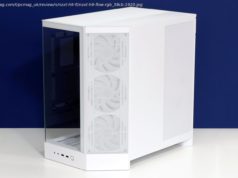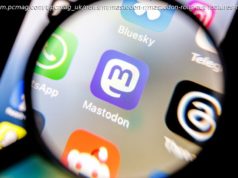Microsoft will be hosting its annual Build developer conference in Seattle this week, outlining some of its product plans for Windows 10, Cortana, Azure, Edge, Office, mixed reality, bots, and more.
Last week, Microsoft unveiled the latest addition to its hardware lineup, the Surface Laptop – the first device to run Windows 10 S, a new edition of the operating system restricted to running apps downloaded from the Windows Store. Windows 10 S is primarily designed for the education market, and it will be made available on a much wider range of low-cost devices from Microsoft’s hardware partners too.
The launch of Windows 10 S places greater emphasis on the Windows Store than ever before, and Microsoft will need the support of its developer community – from the makers of the largest and most famous apps, to the lone developers who make popular software tools – to populate its app marketplace further.
This week, Microsoft will host its annual Build developer conference in Seattle, close to its world headquarters in Redmond, Washington. Windows 10 S and the Windows Store will no doubt be a hot topic, but the company will have plenty more to discuss during its three-day event, which begins on Wednesday.
On paper, the Universal Windows Platform (UWP) is hugely attractive, enabling developers to code their apps to run across a wide selection of device types, with only minimal changes. In practice, though, this proposition hasn’t been quite as appealing to developers as Microsoft would have hoped.
Much of this comes down to the fact that, while Windows 10’s hardware ecosystem is certainly diverse, the overwhelming majority of devices in use are PCs – whether desktops, notebooks, 2-in-1s or tablets. Windows 10 Mobile handsets and Surface Hub displays are few in number; the Mixed Reality platform is still very much in development; and Microsoft continues to exert considerable control over the apps that can run on its Xbox One consoles.
While UWP’s core proposition hasn’t changed, the launch of Windows 10 S will likely prompt Microsoft to focus more on attracting developers to bring their apps to PCs, even if that means using its Desktop Bridge to convert existing apps – as Spotify is doing – rather than rebuilding their software for UWP. But UWP is still a cornerstone of the Windows 10 ecosystem, and Microsoft will no doubt discuss new capabilities and tools at Build to try to make its app platform more appealing to developers.
Last year, Microsoft’s Alex Kipman said that the company was on a mission « to bring mixed reality to every person and organization on the planet ». Microsoft’s vision for augmented and virtual reality is gradually coming together, with thousands of its HoloLens Development Edition headsets sold, and its Windows Mixed Reality shell built into the Windows 10 Creators Update, which is now rolling out to PCs worldwide.
VR headsets, or head-mounted displays, powered by the Mixed Reality shell, will go on sale later this year, targeting both consumers and businesses. Before then, Microsoft needs developers to step up and create more of the mixed reality experiences that will be available on those devices, and Build 2017 offers the ideal opportunity for the company to give those efforts – and UWP as a whole – a boost.
Over the weekend, Harman Kardon officially unveiled the Invoke, a new smart speaker powered by Microsoft’s digital assistant, which it originally teased in December. While the device won’t be going on sale until later this year, the timing of its appearance was no coincidence, coming just a few days before Build 2017.
Like Amazon’s Echo, and Google Home, the Invoke will be voice-controlled with support for Microsoft’s own services, as well as third-party tools through the Cortana Skills Kit, which the company announced last year, but which isn’t yet available to developers. Microsoft said in December that its SDK will make it easy for devs to convert existing skills and abilities designed for Amazon’s Alexa assistant, and repurpose them for use with Cortana.
We’ll likely hear a lot more about this at Build, including some indication of when devs can expect to get their hands on the Skills Kit, to enable them to integrate Cortana support into a broader selection of software – not just for the Invoke, but also across other Windows 10 devices.
At Build 2016, Microsoft announced the Bot Framework, in an effort to make it as easy as possible for the software community to create interactive tools and assistants powered by its artificial intelligence and machine learning platforms. ‘Conversation as a Platform’ was a major focus of last year’s event, and is closely linked with the company’s plans for Cortana.
Following Microsoft’s acquisition of Wand in June 2016, we expect to learn more about its next big push for bots this week.
Microsoft’s latest earnings report revealed details of another strong quarter for its cloud platform, and the company will be keen to continue building on that momentum. Microsoft has worked hard over the last twelve months to improve Azure with new features and services, new pricing options, and wider availability around the world. We should hear more on its roadmap for Azure later this week.
With well over a billion users, Office is one of the most important products in Microsoft’s portfolio. The productivity suite is now available on all major platforms, and Microsoft has been regularly updating it for all devices, adding new features developed with the help of its Office Insider community.
While Word, Excel and PowerPoint are often what come to mind when thinking about Office, the wider Office platform is much larger than just those core apps. Developers can create add-ins for Outlook, for example; and Teams, its new ‘chat-based workspace’ for Office 365, also offers third-party support.
Office is always a big part of Microsoft’s Build conferences, so there’s no doubt that the company will share some of its plans on that front in the coming days.
Microsoft’s phone hardware revenue dropped to just $5 million last quarter, and with some of its partners publicly raising concerns about Windows 10 Mobile’s future, or ditching the platform completely, these are uncertain times for the mobile OS.
Microsoft is continuing to develop Windows 10 Mobile, although the firm has now split its development away from the main OS for the first time since Windows 10’s launch in July 2015.
Microsoft could reveal some details of its next major update for Windows 10 Mobile at Build. But given its vanishingly small user base, and the limited number of devices now supported by the OS, it’s likely that update – currently known as ‘feature2’ – will focus on additions already announced but not yet delivered, including Continuum improvements, and the ‘Night Light’ blue light reduction feature.
Last month, Microsoft confirmed that its next major Windows 10 update will arrive in September.






